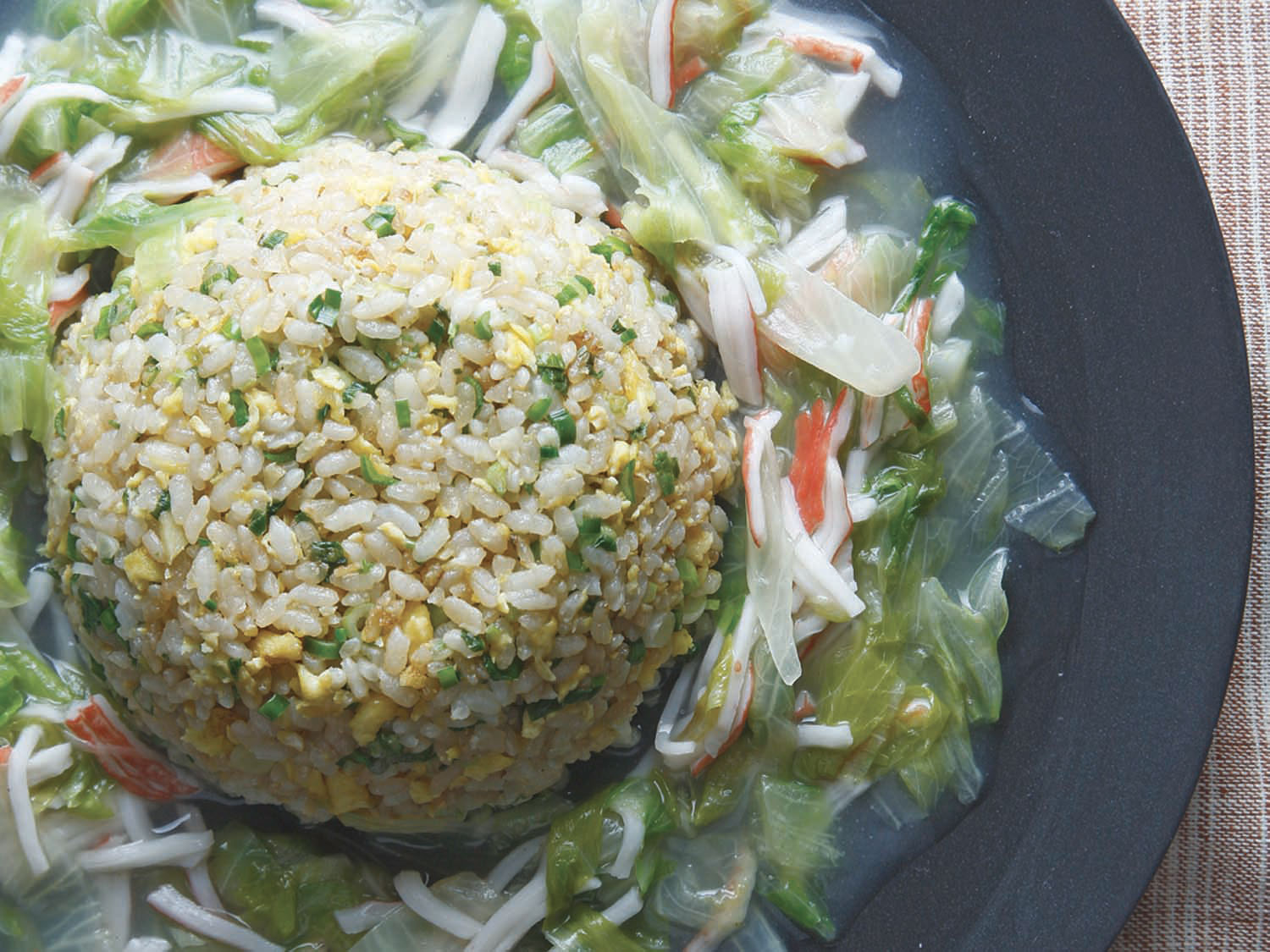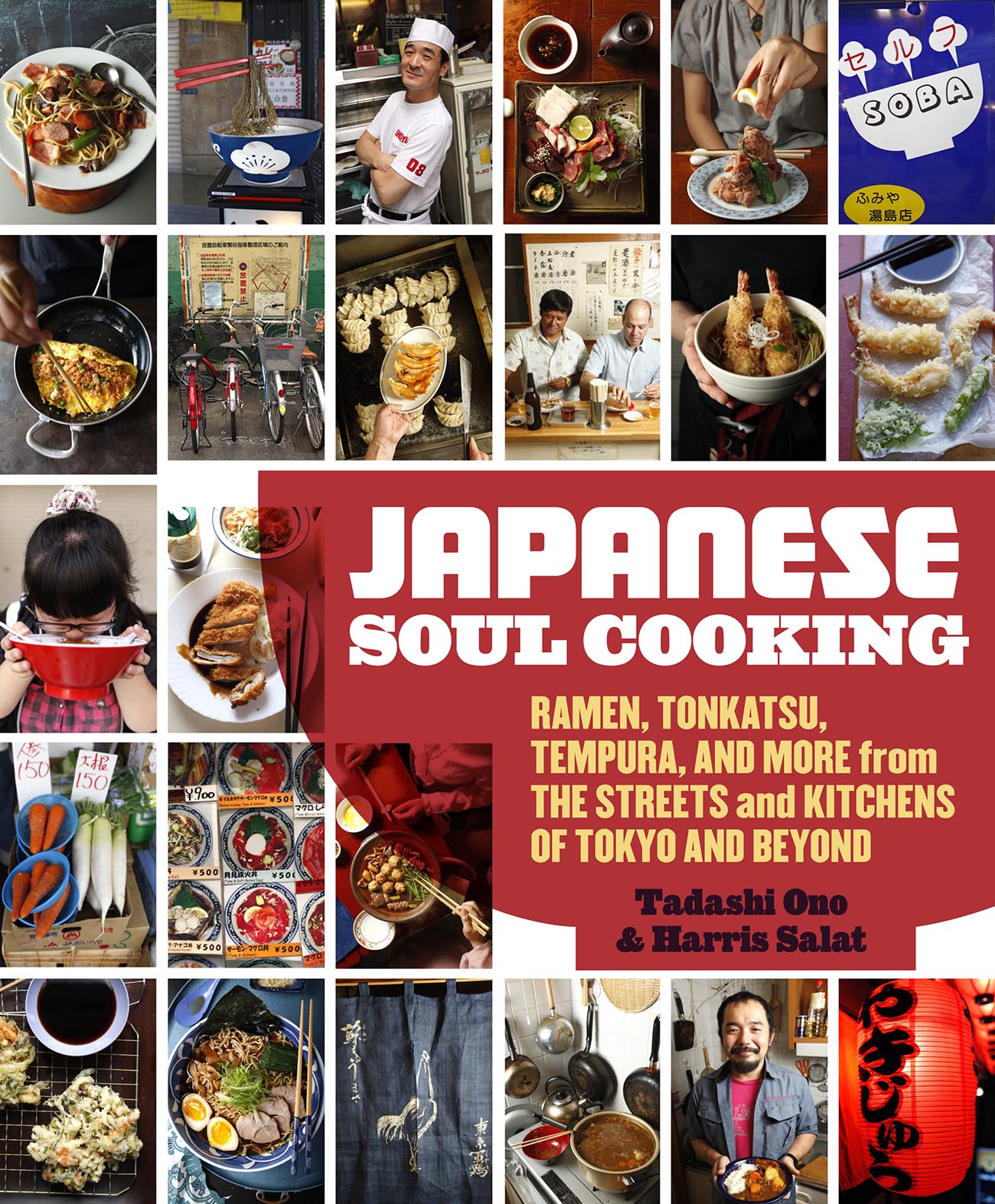Recipe for Crab Fried Rice by Tadashi Ono and Harris Salat
Fried rice is a great way to use up any leftover cooked rice. Here, the dish is lifted with ankake, a sauce infused with ginger.

Penguin Random House
In this dish, fried rice is cooked very simply, with just eggs and scallions. ‘The mojo here comes in the form of the ankake, which is a sauce thickened with potato starch, in this case, one made with ginger-infused crabmeat. Glorious!’, exclaims Harris Salat before outlining the details of the recipe.
In this book that contains over 100 recipes, chef Tadashi Ono and his counterpart, culinary journalist Harris Salat, feature a series of comforting dishes. One example is this recipe for crab fried rice, a dish cooked by the Japanese when they want to use up their leftover cooked rice.
Serves 4
Ingredients
2 tablespoons plus 1 teaspoon toasted sesame oil
4 eggs, beaten
2 scallions (about 60 g), trimmed and chopped
960 g cooked rice, warm, clumps broken up
2 tablespoons soy sauce
1 teaspoon salt
Pinch ground black pepper
Ankake:
240 g crabmeat (canned is fine, about 240 g)
250 ml torigara stock
120 g iceberg lettuce leaves, cut into bite-size pieces
1.25 cm (about 8.5 g) ginger, peeled and julienned
1 teaspoon salt
Pinch ground black pepper
2 teaspoons katakuriko (potato starch) dissolved in 2 tablespoons water
Method
Heat 1 teaspoon of the sesame oil in a wok over high heat. Add the eggs and gently scramble until set, about 10 seconds. Remove the eggs and set aside.
Heat another tablespoon of the sesame oil in a wok over high heat. Add the scallions and cook, stirring constantly, for about 30 seconds, until they give off an oniony smell. Next add the rice, and cook, always stirring, for 30 seconds more. Now add the soy sauce, salt, pepper, and cooked eggs, cooking whilst stirring for another 30 seconds. Add the remaining 1 tablespoon sesame oil, and cook, again stirring constantly, for 10 more seconds. Turn off the heat.
Arrange four plates on a work surface, and ready four small bowls to serve as moulds (rice bowls are ideal). Spoon one quarter of the cooked rice into a bowl, then quickly flip the bowl over, and rest it on top of the plate rice-side-down. Do not remove the bowl for now; it will keep the rice warm. Repeat with the remaining three bowls. Set aside.
To prepare the ankake, add the crab, torigara stock, lettuce, ginger, salt, and pepper to a saucepan and bring to a boil over heat. Reduce the heat to medium and simmer for about two minutes, mixing occasionally. Add the katakuriko mixture, and cook, stirring constantly, for about 15 seconds. Turn off the heat.
Unmould the rice by removing the bowls covering it. Pour about one quarter of the ankake either alongside each serving of rice or over it, as you desire. Serve immediately.
Japanese Soul Cooking (2013), by Harris Salat and Tadashi Ono, is published by Penguin Random House (available only in English).
Harris Salat and Tadashi Ono have also written other cookbooks together, such as Japanese Hot Pots and The Japanese Grill.

Penguin Random House
TRENDING
-
The Tattoos that Marked the Criminals of the Edo Period
Traditional tattoos were strong signifiers; murderers had head tattoos, while theft might result in an arm tattoo.

-
Chiharu Shiota, Red Threads of the Soul
Last year, more than 660,000 people visited the retrospective 'Chiharu Shiota: The Soul Trembles' exhibit at the Mori Art Museum.

-
‘Before Doubting Others, Doubt Yourself. Who Can Truly Say a Dish Isn’t What It Used to Be?’
In ‘A Non-Conformist’s Guide to Surviving Society’, author Satoshi Ogawa shares his strategies for navigating everyday life.

-
The Story of Sada Yacco, the Geisha who Bewitched Europe
Described by Dazed magazine as the first beauty influencer, she has been restored to her former glory since 2019.

-
Ito Jakuchu's Naturalist Paintings
From 15 September until 14 October 2018, the Petit Palais showcased the artist's iconic ‘Images of the Colourful Realm of Living Beings’.





